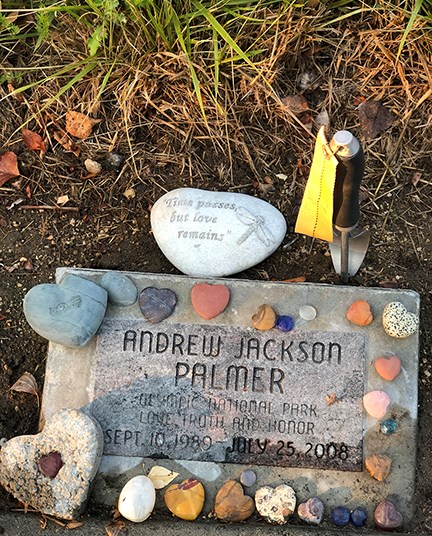Last updated: August 24, 2023
Article
Remembering Andy Palmer: NPS Wildland Firefighter

On July 25, 2008, 18-year-old National Park Service wildland firefighter, Andy Palmer, was fatally injured in a tree falling accident on the Eagle fire burning on the Shasta-Trinity National Forest in California. Three hours and twenty-six minutes after he was injured, emergency medical personnel pronounced Andy dead at the Redding Airport. He never made it to a hospital.
Andy’s death was a jarring wake up call for many in the wildland firefighting community. Medical emergency planning efforts were not as robust as other facets of interagency fire management. Since 2008, the wildland fire community has made progress in preparing for medical emergencies. Among other things, the Dutch Creek Protocols, issued by the National Wildfire Coordinating Group (NWCG), highlighted the need for better planning and standardized communication protocols.
A story for Wildland Fire’s “This Day in History” focused on Andy’s death and surrounding events. This Day in History is part of the 6 Minutes for Safety program used by thousands of firefighters around the world each day. On the anniversary of Andy’s death, firefighters’ safety discussion revolves around how to respond to a medical emergency.

NPS
Though it seemed slow at times, progress was made in the course of a decade. The year after Andy died, the Wildland Fire Lessons Learned Center printed and mailed approximately 100,000 pink stickers for wildland firefighters to insert into their 2010 Incident Response Pocket Guide (IRPG). These stickers outlined the communication protocol in the event of a medical emergency. Ultimately, the pink stickers became the Medical Incident Report in the 2014 IRPG and were commonly referred to as the “9 Line”. Inclusion of the Medical Incident Report replaced portions of the original Dutch Creek Protocol. After four years of refinement, the Medical Incident Report was updated in the 2018 IRPG
The 2010 IRPG also added “Emergency Medevac Procedures/Plan” to the risk management process. A new page, “Planning for Medical Emergencies”, was also added. It asked the three primary questions:
- What are we going to do if someone gets hurt?
- How will we get them out of here?
- How long will it take to get them to a hospital?
Since Andy’s death, three new positions have been made available in the Incident Qualification and Certification System (IQCS). These positions are arduous duty Emergency Medical Technician, Advanced Emergency Medical Technician, and Paramedic. The standard requirements for these three positions ensure a minimum level of fire behavior knowledge and fitness level for EMTs working on the fireline and that a person with the proper qualification can be ordered by an incident management team for a fire assignment.
The ICS-206 WF, Medical Plan, is more robust now and includes the Medical Incident Report so that all personnel assigned to an incident are working from the same standard report form.
The Wildland Fire Lessons Learned Center produced a very powerful video as part of the “Firefighter Remember This” series. This video, “We Will Never Forget You: Remembering Andy Palmer,” is a sixteen-minute overview of the accident that took Andy’s life, and provides thought provoking points to consider. Ultimately, it challenges all levels of fire management to ask the three questions noted above before engaging in wildland fire management actions.
The Wildland Fire Decision Support System includes the capability to estimate ground transport time from every point within the continental United States to a definitive care facility using the Estimated Ground Evac layer. The intent is to encourage discussions on risk tolerance and risk mitigation when making strategic fire management decisions.

NPS \ C. BOEHLE
The demonstrated capability of NPS helicopters to extract an injured firefighter by short-haul is now widely recognized and led to the development of a short-haul program within the United States Forest Service.
In the decade since Andy Palmer died in the Dutch Creek Incident, many injured firefighters have benefited from the additional tools, resources, and the added focus on emergency medical procedures. The National Park Service, along with our interagency partners, honors Andy through our commitment to all firefighters that each and every one of them returns home.
